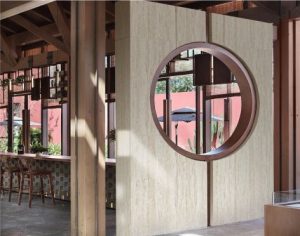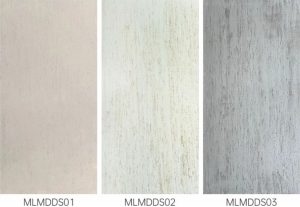Exploring Flexible Stone: Your Ultimate Guide
2025-09-11
Flexible stone is shaking up the world of design and building. It’s got the stunning look of natural stone but comes with a modern twist—flexibility. If you’re a homeowner eyeing a one-of-a-kind wall, a designer chasing fresh ideas, or a builder after practical solutions, this guide’s got you covered. We’ll dive into what flexible stone is, how it’s crafted, why it’s awesome, where it shines, and more. By the end, you’ll get why it’s stealing the spotlight worldwide.
What’s Flexible Stone All About?
Think of flexible stone as a super-thin slice of real stone glued to a bendy backing. It can go around corners or hug odd shapes with little to no chance of breaking. Perfect for spots where heavy, clunky stone just won’t work.
The idea came from fixing the headaches of traditional stone. Regular stone is bulky, tough to slice, and a pain to move. It is time-consuming, expensive, and labor-intensive to construct commercial buildings. Flexible stone flips that script. It’s light and easy to handle. Thanks to better tech, it’s more natural and more common now. Designers and builders love it for its good looks without the grunt work.
What Makes It Special
Why’s flexible stone so popular? It’s crazy thin—usually 3 to 5 millimeters,so it get that real-deal vibe with the ability to bend. But it still rocks the natural textures and colors of stone. Plus, it laughs off weather, scratches, and fading. In addition, its materials are made of natural soil and stone powder, which are environmentally friendly and formaldehyde-free. No wonder it’s showing up in homes and shops left and right. Of course, they are also often used on the interior and exterior walls of large buildings such as resorts, hotels, libraries, and museums.
How Flexible Stone Gets Made
Raw material preparation and processing. Natural mineral powders are cleaned, dried, and ground to enhance product performance. (Main sources: selected clay (modified clay), stone powder, etc.) Ensure uniform and fine particles. Polymers and additives are added. (Polymers provide adhesion, flexibility, weather resistance, and water resistance. Additives improve processing performance and enhance final product properties such as fire resistance, antibacterial properties, and color stability.)
Mixing. Add all the ingredients (fine mineral powder, polymer emulsion, and various additives) to a large blender and mix thoroughly at high speed. This is a critical step, ensuring that all components are evenly dispersed to form a fine, particle-free, and fluid paste.
Spraying. The mold directly determines the surface effect of the finished soft silk product. Apply a large amount of mixed slurry evenly on the mold. Attach two layers of fiber mesh. Apply a thin layer of slurry and fiber mesh and scrape it flat.
Bake and solidify into shape. The materials after Spraying and forming are sent into multi-section temperature-controlled channels for baking and curing.
Peeling and cutting. Peel the solidified soft magnetic material from the mold and cut it into sheets of standard or custom sizes.
Maintenance. Store under specific temperature and humidity conditions for a period of time to make its performance more stable.
3D inkjet. 3D inkjet printing directly prints richer, more realistic colors and patterns on the surface of the original blank, achieving a high degree of customization, and then dries the product.
Surface treatment. Roll or spray a layer of transparent protective or nano-coat on the dried and cured surface.
Inspection and packaging. Finished products undergo rigorous appearance inspection, dimensional measurement, and performance spot checks. They are then packaged according to specifications, protected with stretch film, and finally loaded into containers and packed.
The Stuff It’s Made Of
Natural stone’s the star. Slate gives earthy vibes. Sandstone brings cozy warmth. Marble screams fancy. The backing? Usually eco-friendly resins that grip without adding heft. Together, they make something real but bendy.
Kinds of Flexible Stone
Flexible stone isn’t one-size-fits-all. Each type has its own characteristics.
- CementStyle: Rough, rugged textures in grays and browns. Awesome for a rustic feel.
- Sandstone Look: Smooth, sandy shades. Fits warm, inviting spots.
- Marble Vibes: Natural stonepatterns, shiny finish. Great for posh, upscale spaces.
- Limestone Choice: Soft, even surfaces. Perfect for chill, low-key elegance.
Thickness stays slim for easy bending. Colors go from soft beiges to bold pops. You can pick matte or glossy finishes, depending on your vibe.
Picking the Right One
Think about your space. Inside? Maybe go for glossy marble. Outside? Tough slate’s your buddy. Match colors to your decor—earthy for cozy, bright for pizzazz.
Why Go for Flexible Stone? The Cool Stuff
Flexible stone outshines other materials in big ways. It can bend easily, so it fits curves or tight corners no problem. You can slice it with basic tools—no need for fancy gear.
Compared with natural stone, it is very light, so moving it’s a breeze. Less weight means less stress on walls or ceilings, great for fixer-uppers. It’s way lighter than solid stone, which saves cash on shipping.
In addition, it is highly weather-resistant, waterproof, and fireproof.
And the looks? It nails that natural stone charm. Textures feel legit. Colors stay vivid. Plus, it’s kinder to the planet—less digging, some recyclable options.
How It Shines in Real Life
Imagine seamlessly wrapping a column with stone, or smoothly covering a curved wall. That’s the flexibility kicking in. On a budget? Its light weight cuts labor and shipping costs. Long-term, it’s low-maintenance, saving you bucks.
Where Flexible Stone Rocks

This stuff works just about anywhere, from cozy homes to bustling public spots.
In houses, it spruces up interiors. Slap it on living room walls for a wow factor. Line bathrooms for a spa-like escape. Kitchen counters or backsplashes get a glow-up.
Outside, it’s a champ for facades. It stands up to weather, so it’s great for garden walls or patios.
Businesses are all over it. Shops use it for displays that grab eyes. The office uses it for decoration. Hotels craft swanky entrances.
Real-World Wins
| Application | Why It’s Awesome | Example Spot |
| Interior Walls | Adds texture, not heft | Living rooms or bedrooms |
| Exterior Facades | Tough against weather | Villas in sunny spots |
| Curved Surfaces | Easy to bend | Columns in hotels or shops |
| Decorative Accents | Easy to shape | Art pieces in galleries |
These show how it mixes style and function to make spaces pop.
Putting Up Flexible Stone
Installing it’s a cinch, even for DIY newbies. Start by cleaning the surface. Make it dry and smooth. Grab simple tools—a knife, trowel, and roller.
Measure your spot. Cut sheets to fit. Spread adhesive on the back, nice and even.
Press the flexible stone down firm. Roll out bubbles. Trim edges for a tidy finish.
For big jobs, tackle small patches at a time. Keep checking it’s lined up right.
Tips to Nail It
When applying, ensure the surface is flat, clean, and free of oil, dirt, and loose materials.
Use a scraper to evenly apply the adhesive to prevent hollowing and flaking.
For special shapes or complex surfaces, various installation methods are available, including dry hanging and gluing.
What precautions should be taken during installation?
The product is thin and light, making it susceptible to damage during handling, stacking, and installation. Handle it carefully and stack it flat on the ground, avoiding excessive height. Apply grout or glue evenly during installation.
Corners should be constructed according to the project design requirements and can be shaped like a scalloped corner, close-fitting, or 45-degree angles.
Be careful not to dirty the surface of the product. Large-sized MCM sheet products above 600X300mm must be plastered on both sides and cannot be plastered on one side of the wall. After application, compact the surface with a slab rubber. Avoid pressing hard with your palms or fingers to prevent hollowing or unevenness. Do not tap the surface as you would with ceramic tiles. For outdoor installation, avoid exposure to rain within 48 hours to prevent peeling or alkali reversion. The ambient temperature should not drop below 5°C or exceed 40°C.
Meet Foshan Sincere Building Materials Co., Ltd.: Your Flexible Stone Go-To
Need flexible stone? Foshan Sincere Building Materials Co., Ltd. has your back. Based in Foshan, China, they’ve been rocking it since 2007. They focus on top-notch indoor and outdoor materials, including flexible stone that meets global standards.
Sincere’s got ISO certifications for quality, environment, and safety. Their stuff hits over 90 countries, with trademarks in 18. As an AEO-certified exporter, they keep customs smooth and service top-tier.
What’s their deal? They put “quality first, customer always.” They offer custom designs and reliable shipping. Retailer or project manager, Sincere’s got materials that blend beauty and toughness. Their flexible stone brings natural vibes while being incredibly easy to use, helping you create killer spaces.
Wrapping It Up
Flexible stone’s a total game-changer. It brings natural stone’s beauty with zero hassle. From bending around corners to holding up in storms, it’s a no-brainer for modern projects. As more folks catch on, it’s popping up everywhere. Wanna try it? It might just make your next build a showstopper.
FAQs
What’s flexible stone in a comprehensive introduction?
Flexible stone is a thin layer of stone adhered with a flexible adhesive. Looks and feels like natural stone but can curve to fit unique spots.
How’s it different from regular stone?
It’s lighter, easier to put up, and cuts shipping hassles. Perfect for tricky projects.
Can flexible stone handle outdoor conditions?
You bet. It’s tough against weather, UV rays, and bumps. Great for facades or garden walls.
Can I put up flexible stone myself?
Yep, with basic tools. Clean the surface, slap on adhesive, and press it down. A sealer adds extra protection.



